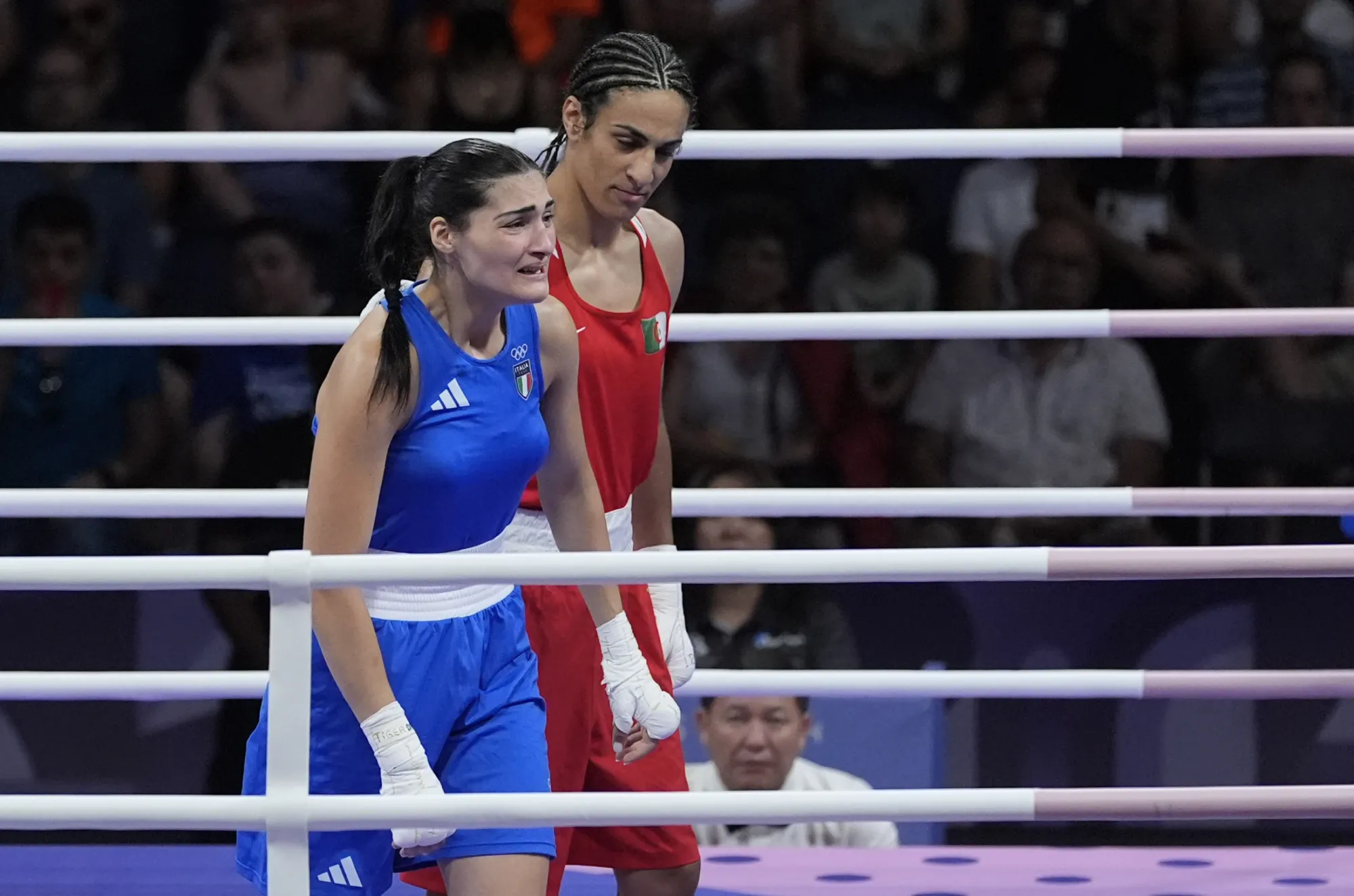Letter From The Editor: What's The Deal With This Olympic Boxer?

Some call this boxer a woman.
Others call this boxer a man.
Some say this boxer has every right to compete; some say this boxer has no right to compete at all.
In the middle of a quadrennial event focused on bringing the world together through competition, a 46-second viral clip dragged a cultural debate into the center of the ring.
Rather unexpectedly.
Who would have thought that women’s boxing would steal some of the spotlight shining brightly on anticipated events like women’s gymnastics? And if you waited for Olympic updates in a nightly news highlight, or found yourself on a social media cleanse – or perhaps you were on vacation on a deserted island with crystal blue water and no internet (which is my hope for you) – you may have missed this particular story, so here’s a quick summary of what happened.

It started last week with an abrupt surrender by an Italian boxer during the first minute of the first round of a qualifying match, which was likely seen by few viewers before the video became a viral sensation. As a viewer, you saw the boxers circle each other, the Algerian boxer (in red) strikes the Italian (wearing blue) in the face, and then the Italian steps back and returns to her corner. More images quickly surfaced – including a photo of the Italian boxer sobbing in the middle of the ring and refusing to shake hands with her opponent. And instantly, this scene became a catalyst for an age-old storyline, arrived in a New World way: Did the victor truly deserve to win?

What’s the Truth? And what is fair?
In the aftermath of the match, the Italian said in an interview that she had never felt a punch like that before and knew she had to surrender. This only added momentum to an emerging theory – a theory supported by a major international boxing association (the International Boxing Association) – that this Algerian boxer, with a powerful athletic build and a punch that made a woman cry, must not be a woman at all.
Wait ...
THAT'S the theory? Not superior skill, or training, or talent?
For those of us who haven't followed women's international boxing – How did the story arrive THERE?
Let’s rewind.
A few important facts.
The Algerian boxer, 25-year-old Imane Khelif, has boxed for years against women on the international stage.
Khelif competed in the Tokyo Olympics in 2020, but did not medal.
Last year, though, during the world championships, Khelif confronted a sudden ban from competing by the prominent (albeit controversial) International Boxing Association (IBA). And Khelif wasn’t the only one; a Taiwanese boxer also faced a similar fate. Both faced disqualification because the IBA asserted they did not meet eligibility requirements – because they "failed" an administered gender test.
We heard more about this on Monday – in a haphazard press conference held by the IBA officials who claim that Khelif has the biological make up of a man – the organization’s former medical committee chairman stated clearly that “these boxers are male.”
The association asserted they tested these athletes two years in a row – and only enforced the ban when the second test results also came back suspect. The IBA said they relayed the results to the International Olympic Committee (IOC), but fell short of sharing specific test results or procedures due to privacy issues; they referred to the tests only as "blood sample collection" with no details on what the test measured or monitored, or their own standard for reading the results.
We, too, have not seen the test results – nor has any other media outlet to date.
So, let’s consider the source.
On the one hand, the International Boxing Association remains a world leader in boxing events and competition.
On the other, the organization itself faces its own ban from being recognized by the Olympics … a decision made by the International Olympic Committee itself, demoting the IBA from being a leading governing sports body … due to transparency and integrity issues. This controversy has brewed for years, so perhaps this bad blood simply spilled over when the eyes of the world focused on the specific world of sports.
But it would be wrong to dismiss this story as some spurious claim by a jilted organization, as the chair of the IOC tried to do, stating that the organization won’t participate in “hate speech” or “in a cultural war.”
The reason why the storyline gained so much attention isn’t just because of this particular situation in women’s boxing, but because of rising questions about fairness in sports and gender, and this unique intersection in modern athletics: Can athletes participate in sports aligning with a gender of their choosing rather than their declared gender at birth? What’s fair? What makes sense? And what is safe (especially in a contact sport)? These questions reflect real concerns not only for athletes, but for sports fans and families around the world. And we should not dismiss these concerns as just part of a “culture war,” but attempt to clarify this current, developing story with a wider lens:
In this new world, ripe with new terms like “gender fluid” … absent a universal, agreed-upon standard … how does one confirm the gender identity of ANY athlete, ever?
Finding the answer is not quite as simple as it may seem.



